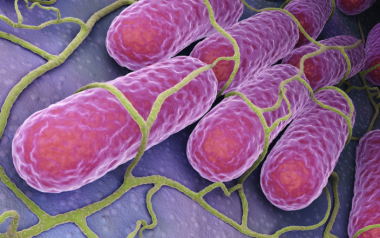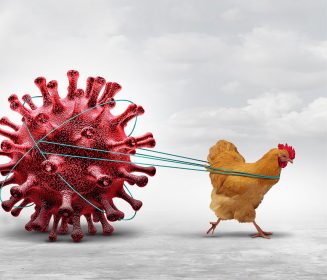Sources: Available upon request.
Marek’s virus, a millenary poultry disease
A recently published Science magazine study by geneticists at the University of Oxford and LMU Munich has used ancient DNA analysis to uncover the deadly evolution of Marek's disease virus (MDV) in poultry.
A recently published Science magazine study by geneticists at the University of Oxford and LMU Munich has used ancient DNA analysis to uncover the deadly evolution of Marek's disease virus (MDV) in poultry.
This virus causes lymphoid tumors in chickens and is currently lethal in more than 90% of unvaccinated birds, requiring millions of dollars to control.
It is important to remember that Marek's disease is caused by a herpes virus. The virus is transmitted by oral and respiratory routes and can remain in the environment for a long time.
The main symptoms are:
- Weight loss.
- Paralysis.
- Bird on the ground with one leg forward and one leg backward.
- Tumors of lymphoid origin on the skin.
- Other neurological symptoms.
Diagnosis is based on clinical history, observation of gross lesions and histopathology. A more detailed diagnosis includes the use of more advanced techniques such as immunohistochemistry, serology and molecular biology (PCR and RT-PCR).
Treatment is by vaccination and prevents the appearance of tumors and paralysis in chickens but does not prevent them from becoming infected by the pathogenic virus and remaining carriers. Therefore, biosecurity and high sanitary and hygienic standards are essential to avoid exposure to Marek's virus.
Continuing with the Science magazine study, the exponential increase in poultry since the 1950s has impacted the evolutionary trajectory of Marek's virus. This study demonstrates how this virus has increased in virulence over the last century, becoming a significant threat to poultry farming.
An international team of geneticists, biologists, and archaeologists has managed to rescue ancient MDV sequences from chickens dating back 1,000 years. By comparing viral genomes from ancient and modern birds, they identified key genetic alterations associated with increased virulence in modern strains of the virus.
This study has helped to understand the evolution of the virus but also opens the door to the development of more effective therapies against this devastating poultry disease. The study took DNA isolated from chicken bones excavated from 140 archaeological sites in Europe and the near East, revealing that MDV was widespread among european birds at least 1,000 years before its first description in 1907. Preservation of archaeological remains is key to understanding the evolution of virulence in pathogens.
Initially, Marek's disease caused mild symptoms in older chickens, but MDV evolved into a more aggressive form, despite the development of several vaccines, as poultry consumption increased around 1950 and 1960.
These findings not only show us the evolutionary history of Marek's disease virus, but also provide a crucial basis for improving the current understanding of the virulence of this pathogen. The combination of ancient DNA techniques with modern genomics opens a window into the past, guiding future strategies in viral disease management.







































